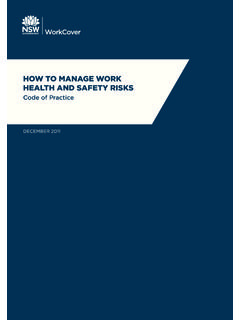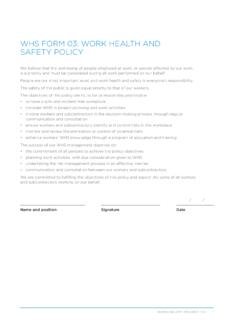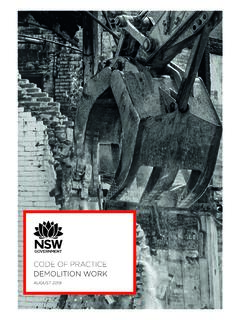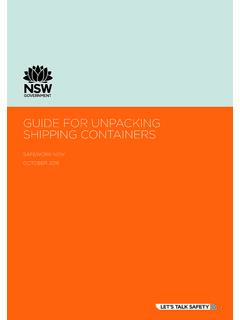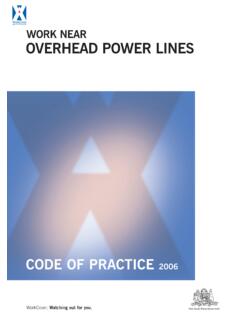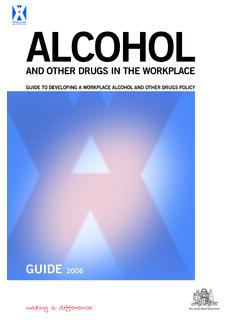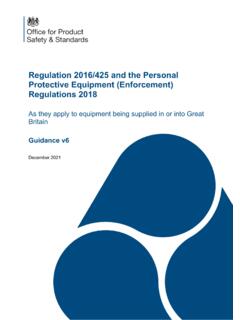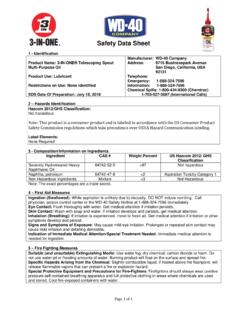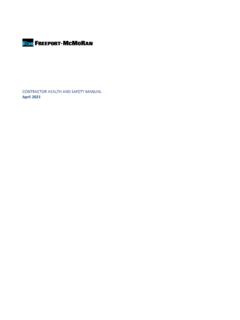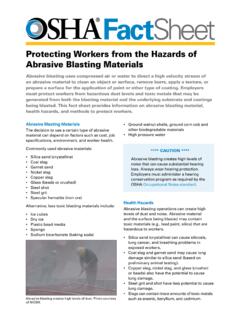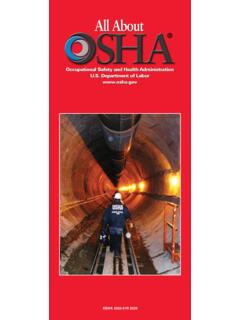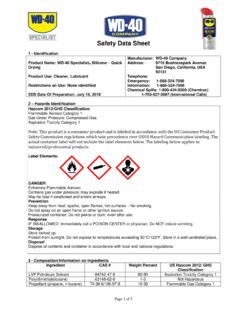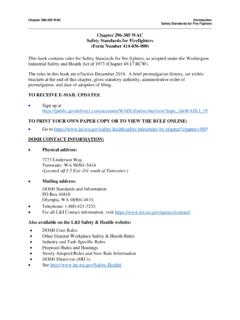Transcription of Storage and handing of dangerous goods - SafeWork NSW
1 Storage AND HANDLING OF dangerous goods CODE OF PRACTICE 2005 NO LONGER IN FORCE - FOR INFORMATION ONLY NO LONGER IN FORCE - FOR INFORMATION ONLYThis former code of practice under the OHS legislation is provided for the purpose of guidance only. Readers should not rely on statements in this document to ascertain requirements under the Work Health and Safety Regulation 2011. The information in this document should be used only as guidance on practical processes and controls to manage risks to health or safety.
2 Disclaimer This publication may contain work health and safety and workers compensation information. It may include some of your obligations under the various legislations that WorkCover NSW administers. To ensure you comply with your legal obligations you must refer to the appropriate legislation. Information on the latest laws can be checked by visiting the NSW legislation website ( ). This publication does not represent a comprehensive statement of the law as it applies to particular problems or to individuals or as a substitute for legal advice.
3 You should seek independent legal advice if you need assistance on the application of the law to your situation. WorkCover NSW WHAT IS AN APPROVED INDUSTRY CODE OF PRACTICE? An approved industry code of practice is a practical guide to employers and others who have duties under the Occupational Health and Safety Act 2000 (the OHS Act) and the Occupational Health and Safety Regulation (OHS Regulation) with respect to occupational health, safety and welfare. An industry code of practice is approved by the Minister administering the OHS Act.
4 It comes into force on the day specified in the code or, if no day is specified, on the day it is published in the NSW Government Gazette. An approved industry code of practice may be amended from time to time (or it may be revoked) by publication in the Gazette. An approved industry code of practice should be observed unless an alternative course of action that achieves the same or a better level of health, safety and welfare at work is being followed. An approved industry code of practice is intended to be used in conjunction with the requirements of the OHS Act and the OHS Regulation but does not have the same legal force.
5 An approved industry code of practice is advisory rather than mandatory. However, in legal proceedings under the OHS Act or OHS Regulation, failure to observe a relevant approved industry code of practice is admissible in evidence concerning an offence under the OHS Act or OHS Regulation. A WorkCover Authority inspector can draw attention to an approved industry code of practice in an improvement or prohibition notice as a way of indicating the measures that could be taken to remedy an alleged contravention or non-compliance with the OHS Act or OHS regulation.
6 Failure to comply with an improvement or prohibition notice without reasonable excuse is an offence. In summary an approved industry CODE OF PRACTICE: gives practical guidance on how health, safety and welfare at work can be achieved should be observed unless an alternative course of action that achieves the same or a better level of health, safety and welfare in the workplace is being followed can be referred to in support of the preventive enforcement provisions of the OHS Act or OHS Regulation can be used as evidence to support a prosecution for failing to comply with or contravening the OHS Act or OHS Regulation.
7 NO LONGER IN FORCE - FOR INFORMATION ONLY1 FOREWORD This code of practice provides comprehensive practical guidance on the safe Storage and handling of substances and articles classified as dangerous goods , apart from explosives, infectious substances and radioactive substances. This code of practice outlines control measures focussed on physically containing the hazards and risks posed by dangerous goods . personal exposure risks are covered in the NSW Code of practice for the control of workplace hazardous substances.
8 In 2003 a review of the regulation of dangerous goods led to major reform. The regulation of the Storage and handling of most classes of dangerous goods will now come within the Occupational Health and Safety Regulation 2001, under the Occupational Health and Safety Act 2000. Explosives will come under the Explosives Act 2003 and the Explosives Regulation 2005. The previous legislation, the dangerous goods Act 1975 and the dangerous goods (General) Regulation 1999, will be repealed. The effect of these reforms is to place dangerous goods within a risk management framework, consistent with all other types of hazards found within workplaces.
9 This code of practice provides advice on applying this risk management framework to dangerous goods . These principles are extended to include aspects of public safety. This code of practice also incorporates a number of Australian Standards applying to dangerous goods . Formerly, compliance with these Australian Standards was mandatory. In the new arrangements compliance with these Standards is recommended; these Standards having the evidentiary status of codes of practice. This code of practice applies to workplaces regardless of quantities stored, handled or used.
10 However, the guidance is provided in relation to quantities so that those workplaces with small quantities do not necessarily need to observe all chapters. This code of practice applies to non-workplaces where the quantities of dangerous goods stored or handled are above certain amounts. This new legislation is based upon the National Standard for the Storage and Handling of dangerous goods declared by the National Occupational Health and Safety Commission in 2001. This code of practice is based upon a similar code produced by the State of Victoria, and the national code declared by the National Occupational Health and Safety Commission (NOHSC).

